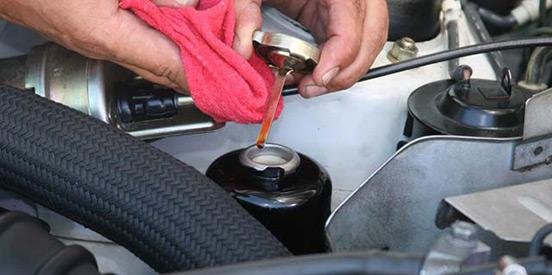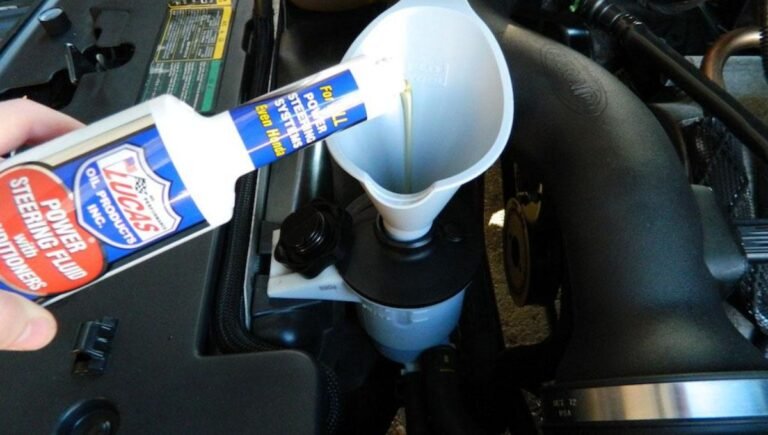Can Bad Shocks Cause Steering Problems? Uncover the Truth!
Bad shocks can indeed cause steering problems by leading to poor vehicle stability and control. When shocks are worn out, they can affect the vehicle’s ability to absorb bumps and maintain proper contact with the road, resulting in steering issues.
This can manifest as excessive bouncing, swaying, or a feeling of looseness in the steering wheel. Addressing bad shocks promptly is crucial to ensure safe and efficient driving. In this blog post, we will explore the impact of bad shocks on steering performance, signs of potential issues, and the importance of regular maintenance to prevent such problems.
Let’s delve into how bad shocks can affect your vehicle’s steering and overall driving experience.
Introduction To Steering And Shocks
When it comes to the smooth and safe operation of a vehicle, the steering system and shocks play critical roles. The steering system allows the driver to control the direction of the vehicle, while the shocks, also known as shock absorbers, help to manage the vehicle’s suspension and ensure a comfortable ride. In this article, we will delve into the relationship between bad shocks and steering problems, shedding light on their interconnectedness.
The Role Of Shocks In Vehicle Dynamics
Shocks are an essential component of a vehicle’s suspension system, responsible for absorbing the impact of bumps and uneven road surfaces. They help to maintain the stability and control of the vehicle by minimizing the bouncing and swaying motions. Moreover, bad shocks can lead to excessive body movement, affecting the vehicle’s handling and, consequently, the steering response.
Symptoms Of Steering Problems
When the steering system is compromised, it can manifest through various symptoms that directly impact the driving experience. Steering problems such as difficulty in steering, excessive play in the steering wheel, or vibrations during steering can indicate potential issues. These symptoms may be exacerbated by bad shocks, as they can introduce additional instability and irregularities in the vehicle’s movement.
Shocks And Steering: The Connection
When it comes to vehicle maintenance, the connection between shocks and steering is often overlooked. Understanding how bad shocks can cause steering problems is crucial for ensuring the safety and performance of your vehicle. Let’s delve into the impact of worn shocks on steering precision and how shocks affect steering.
How Shocks Affect Steering
Shocks play a vital role in maintaining the stability and control of a vehicle. When shocks are in good condition, they help to absorb the impact of bumps and uneven road surfaces, preventing excessive bouncing and swaying. This, in turn, contributes to a smoother and more predictable steering experience.
The Impact Of Worn Shocks On Steering Precision
Worn shocks can significantly compromise steering precision. When shocks are past their prime, they are less effective at dampening the movement of the vehicle, leading to increased body roll and instability. This can result in reduced responsiveness and control in steering, especially when navigating corners or rough terrain. Additionally, worn shocks can cause uneven tire wear, further exacerbating steering issues.
Common Steering Problems Linked To Bad Shocks
Bad shocks can indeed cause steering problems in vehicles. When shocks are worn out, steering responsiveness decreases, leading to issues like poor handling and instability while driving. It is crucial to address bad shocks promptly to ensure safe and smooth steering performance.
Loose Steering Feel
If you have bad shocks, you might experience a loose steering feel while driving. This is because shocks are responsible for keeping your wheels in contact with the road and providing stability to your vehicle. When shocks wear out, they can no longer keep your wheels firmly on the ground. As a result, your steering may feel loose and unresponsive. This can be dangerous, especially at high speeds or in emergency situations.Steering Wheel Vibrations
Another common steering problem linked to bad shocks is steering wheel vibrations. If your shocks are worn out, they can no longer absorb the bumps and vibrations of the road. This can cause your steering wheel to vibrate or shake while driving. Steering wheel vibrations can be uncomfortable for the driver and passengers, and can also affect your ability to control the vehicle. If you notice any steering wheel vibrations, it is important to get your shocks checked by a professional as soon as possible. Bad shocks can cause a variety of steering problems that can affect your safety and the performance of your vehicle. If you notice any of the symptoms mentioned above, it is important to have your shocks checked and replaced if necessary. Regular maintenance and inspections can help prevent steering problems and keep your vehicle running smoothly.Diagnosing Steering Issues: A Step-by-step Guide
When it comes to steering problems in your vehicle, it’s important to identify the root cause in order to address the issue effectively. One potential culprit that often goes overlooked is the condition of your shocks. Bad shocks can actually contribute to steering problems, so it’s crucial to include them in your diagnostic process. In this step-by-step guide, we will walk you through the process of diagnosing steering issues and how to inspect your shocks and components to ensure optimal steering performance.
Visual Inspection Of Shocks And Components
To begin diagnosing steering problems, you’ll want to visually inspect your shocks and related components. This can be done by following these simple steps:
- Start by parking your vehicle on a level surface and engaging the parking brake for safety.
- Locate the shocks, which are typically found near the wheels and are connected to the suspension system.
- Inspect the shocks for any visible signs of damage, such as leaking fluid, dents, or excessive wear.
- Check the mounting bolts and bushings for any signs of looseness or damage.
- Ensure that all other components related to the steering system, such as tie rods and control arms, are also visually inspected for any visible issues.
By conducting a thorough visual inspection, you can quickly identify any obvious problems with your shocks and related components that may be contributing to steering issues.
Road Testing For Steering Performance
Once you have completed the visual inspection, the next step is to road test your vehicle to assess its steering performance. Here’s how:
- Take your vehicle for a drive on a road with minimal traffic and a variety of speeds.
- Pay close attention to how the steering feels as you make turns, both at low and high speeds.
- Notice if there is any excessive play or looseness in the steering wheel.
- Listen for any abnormal noises, such as clunking or squeaking, during steering maneuvers.
- Observe if the vehicle pulls to one side or if the steering feels unresponsive or inconsistent.
By road testing your vehicle, you can gather valuable information about its steering performance and identify any issues that may not be apparent during the visual inspection. This step is crucial for a comprehensive diagnosis.
By following this step-by-step guide and conducting a visual inspection of your shocks and components, as well as road testing for steering performance, you can effectively diagnose and address steering problems in your vehicle. Don’t overlook the importance of your shocks in maintaining optimal steering performance!
The Science Behind Shocks And Steering Stability
Understanding the relationship between shocks and steering stability is crucial for maintaining a safe and smooth driving experience. The shocks in your vehicle serve the important function of absorbing the impact from uneven surfaces, keeping your tires in constant contact with the road. However, did you know that bad shocks can also lead to steering problems? In this article, we’ll delve into the science behind shocks and steering stability, exploring the physics of shock absorption and how steering geometry impacts shock performance.
The Physics Of Shock Absorption
When your vehicle encounters bumps or potholes on the road, the shocks play a critical role in minimizing the impact felt by the vehicle and its occupants. The science behind shock absorption lies in a simple principle: converting kinetic energy into heat energy.
As your vehicle moves over an uneven surface, the shocks compress and release, absorbing the energy generated by the suspension movement. This energy is then converted into heat, dissipating it and preventing it from transferring to the steering system. Without proper shock absorption, the excess energy can lead to steering instability, making it more challenging to control your vehicle.
Steering Geometry And Shock Performance
Steering geometry refers to the relationship between various components of the steering system, including the suspension, tires, and steering linkage. The performance of the shocks is closely linked to the steering geometry, and any deviation can affect how the shocks operate.
When the steering geometry is compromised, such as due to worn-out shocks, it can result in an altered wheel alignment. This misalignment can cause the vehicle to drift or pull to one side, negatively impacting steering stability. Additionally, bad shocks can lead to uneven tire wear, further exacerbating steering problems.
In order to maintain optimal steering stability, it is essential to regularly inspect and replace worn-out shocks. By doing so, you can ensure that the shocks are functioning properly and supporting the steering geometry, allowing for smooth and precise control of your vehicle.
Ultimately, the science behind shocks and steering stability highlights the interconnectedness of various components in your vehicle’s suspension system. By understanding the physics of shock absorption and the impact of steering geometry, you can appreciate the importance of maintaining good shocks for optimal steering performance.
Real-world Cases: Shocks Leading To Steering Failures
Accidents And Incidents Analysis
Improperly functioning shocks can lead to dangerous steering problems, potentially resulting in accidents and other serious incidents. When shocks are worn or damaged, they can cause the vehicle’s tires to lose contact with the road, leading to instability and compromised steering control. This can be particularly hazardous during emergency maneuvers or sudden braking, increasing the risk of collisions and other accidents.
Expert Testimonies On Shocks And Steering Issues
Experts in the automotive industry have consistently highlighted the significant impact of bad shocks on steering performance. Testimonies from experienced mechanics and engineers emphasize that worn-out or defective shocks can directly contribute to steering failures, making it difficult for drivers to maintain control of their vehicles. The correlation between shock absorber condition and steering problems has been well-documented, prompting the need for proactive maintenance and timely replacement to ensure safe and reliable driving experiences.
Repair Or Replace: Solutions For Shock-induced Steering Problems
Poorly functioning shocks can indeed lead to steering issues, causing the vehicle to feel unstable and difficult to control. If you notice excessive bouncing or swaying, it’s crucial to address the problem promptly to avoid compromising safety. Whether it’s repairing the shocks or opting for replacements, timely action is essential for restoring proper steering performance.
Repair or Replace: Solutions for Shock-Induced Steering Problems Choosing the Right Shocks for Your Vehicle When selecting shocks, consider your car’s make and model. Look for shocks designed to handle your specific vehicle. Quality shocks ensure proper steering and handling performance. Professional vs. DIY Shock Replacement Consult a professional for accurate shock replacement. DIY replacement is possible for those with mechanical skills. Always follow the manufacturer’s instructions for shock replacement. Remember to prioritize safety when replacing shocks.Preventive Measures And Regular Maintenance
Scheduled Shock Inspections
Regularly inspect shocks for any signs of wear or damage.
Check for leaking fluid and unusual noises when driving.
Steering System Service And Upkeep
Maintain proper alignment and tire balance.
Replace shocks every 50,000 miles for optimal performance.
Conclusion: Ensuring Safe Steering
Bad shocks can indeed cause steering problems in a vehicle. Worn-out shocks can lead to excessive bouncing and instability, affecting the steering response and making it harder to control the vehicle safely. It is crucial to ensure that shocks are in good condition to maintain safe steering.
Key Takeaways On Shocks And Steering
Regularly check shocks for safe steering and handling.
Bad shocks can lead to steering issues.
Address shock problems promptly to avoid safety risks.
Future Considerations For Vehicle Maintenance
Replace shocks every 50,000 miles for optimal performance.
Consult a mechanic for steering and suspension inspections.
Keep shocks well-maintained for safe and smooth steering.
Conclusion
After analyzing the above discussion, it is evident that bad shocks can indeed cause steering problems. A worn-out shock absorber can result in the excessive movement of the vehicle, leading to steering problems. Therefore, it is essential to maintain your shock absorbers by regularly inspecting and replacing them as needed.
By doing so, you can ensure a safer and smoother driving experience, preventing any steering-related issues that could pose a danger to you and other drivers on the road.

Specializes on car underchassis & power steering repair. We have experienced mechanic to attend all your underchassis & power steering repair needs.



